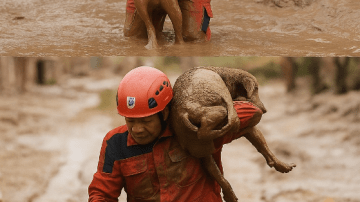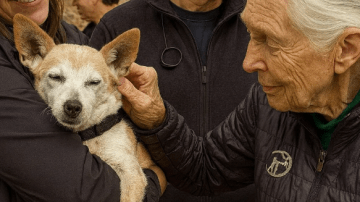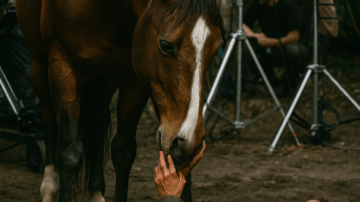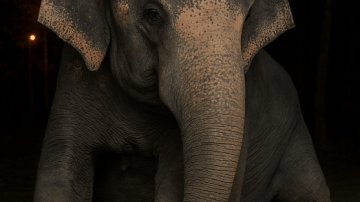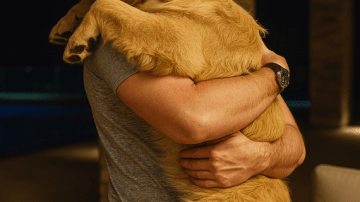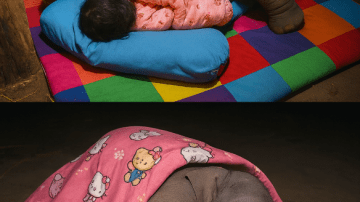The children had noticed her first.
For days, they said, a dog had been lying in the same spot, unmoving, as though the earth itself had claimed her.
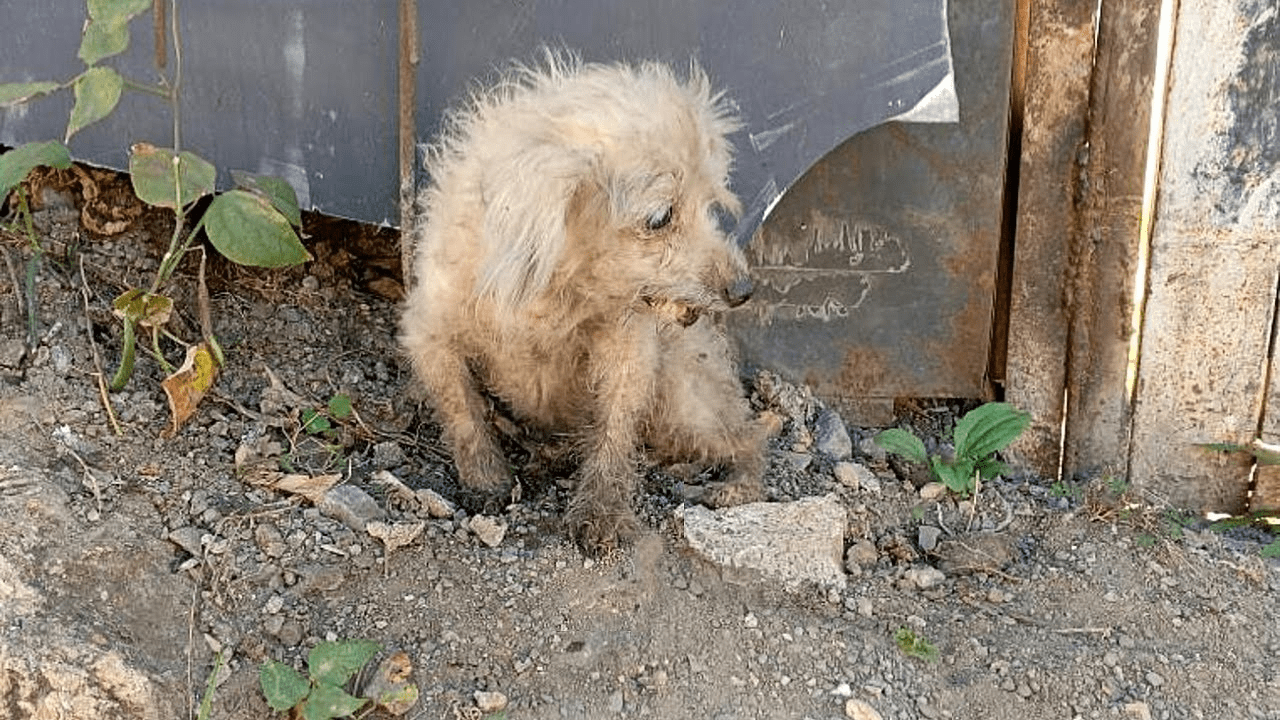
“She was left here by a man who simply walked away,” the children whispered.
When I found her, she was curled against the cold ground. Her body was still, her head twitching faintly from side to side as if trying to sense a world she could no longer clearly see. Her eyes, dulled and clouded, searched desperately for something—perhaps for the man who had abandoned her, perhaps for mercy, or perhaps simply for hope.
She was silent, but her silence carried the weight of despair. Her body, raw and fragile, bore the unmistakable marks of suffering: patches of mange stretched across her skin, ticks feeding greedily, sores carved deep into her back. She was starving, her ribs pressed like sharp ridges against her thinning coat. It was as though her body had become a cruel canvas of neglect.
I couldn’t stop the tears.
She was waiting—for an owner who would never return.
The first step was simple, yet profound: to shave away the filth of her past. Her tangled, dirty fur fell in clumps to the ground as we worked, revealing the fragile body beneath. The bath that followed was more than cleansing; it was a baptism, the first true beginning she had been offered in what must have felt like forever. The water carried away the grime, but also seemed to wash away the silent weight of abandonment.
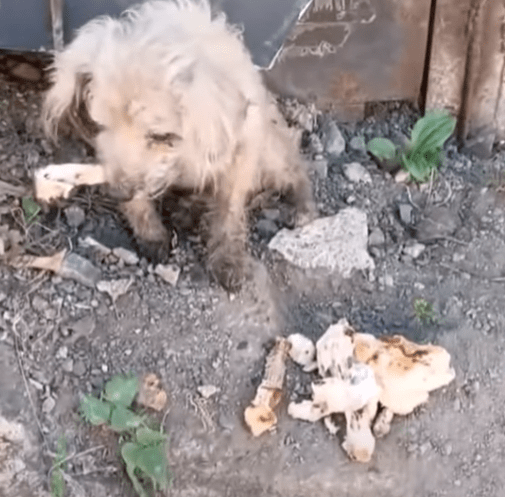
And yet, beneath her fresh skin, her suffering lingered. The bedsores across her back were deep and raw, each one a painful reminder of how long she had been left immobile on unforgiving surfaces. Her eyes were perhaps the most tragic of all. Ulcers had scarred them, leading to infection. She was not fully blind, but her vision was weak, blurry shadows of the world she longed to rejoin. No one could yet say if her sight would ever fully return. Still, the doctors promised to fight for her, to do everything within their power.
We gave her a name: Tulipan.
At first glance, her fragile body and exhausted demeanor made me believe she was an old soul, seven or eight years at least. But as the doctors examined her, they revealed something that broke my heart all over again—Tulipan was only three. Just a child, her youth stolen by suffering.
Yet there was hope. Despite the mange, the ticks, and the sores, her body carried no disease. No silent illness coursed through her veins. Beneath the hunger and neglect, her tiny frame was still a vessel of possibility. She could be saved.
The weeks that followed were nothing short of miraculous. Three weeks after her rescue, Tulipan began to transform. Her sores healed slowly, her mange faded, and her skin, once inflamed and fragile, grew calm and strong. New fur pushed through, soft and thick, like a blanket knitting itself across her body.
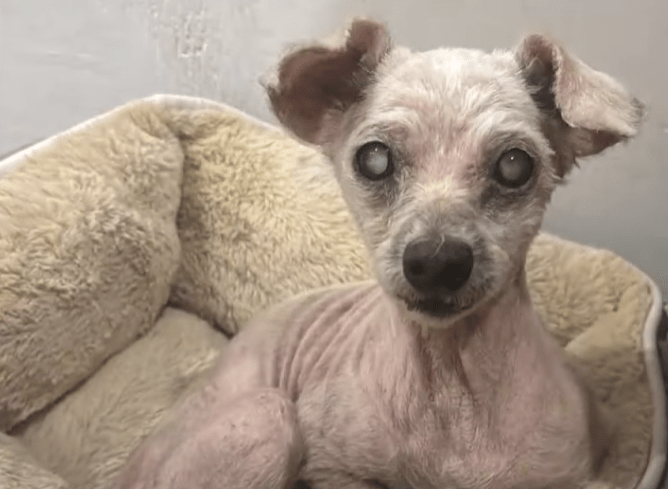
When I looked at her, I could hardly believe she was the same broken creature I had carried from the street. Gone was the skeletal frame; in its place was a budding beauty, a tulip pushing through the frost of winter into the warmth of spring.
Her eyes remained weak. She still struggled to see clearly, and perhaps she always would. But blindness did not define her. It did not stop her from rediscovering the joys of being a dog. She learned to navigate by trust, by scent, by the steady rhythm of footsteps and voices she had come to recognize as safety.
And her heart—her heart healed faster than her body. Tulipan blossomed into joy, into trust, into playfulness. She learned what it meant to be loved, to be spoiled without fear. She discovered that hands could offer gentle strokes instead of cruelty, that voices could bring comfort instead of commands, that food could be plentiful and shared instead of withheld.
The memories of her former owner, the one who had walked away and left her behind, began to fade. The ghosts of neglect were replaced with living warmth. Tulipan’s spirit bloomed in ways that words could barely capture.
By the time a month had passed, Tulipan was living her best life. She romped happily with other animals, forming bonds with her new family. She lounged in the comfort of soft beds, napped in patches of sunlight, and wagged her tail at the sight of those who loved her. She had found safety, and she had found joy.
The young dog who had once been broken now lived as though she had never known despair. Healthy, happy, and carefree, Tulipan had finally become what she always was meant to be: a cherished soul, living a life of love.
Tulipan’s story is more than just a rescue tale. It is a reminder of resilience, of how even the deepest scars can heal when met with compassion. It is a testament to the power of second chances, proof that love can rewrite a destiny that once seemed doomed.
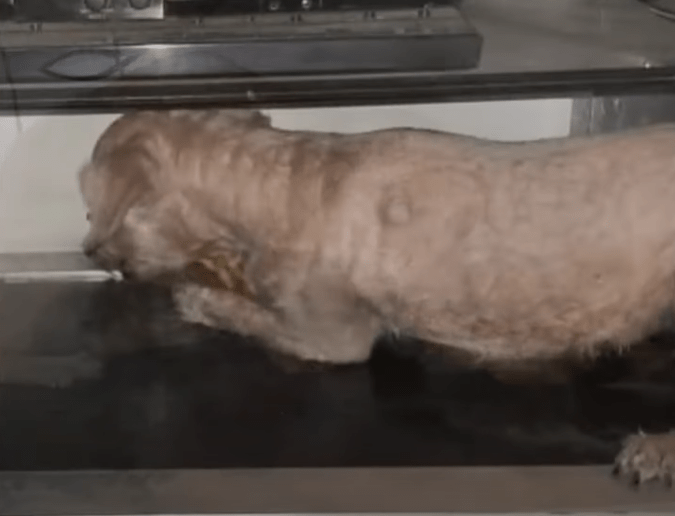
Today, when I see her running across the grass, her fur gleaming, her eyes—though weak—sparkling with mischief, I remember the dog on the cold ground, the one abandoned to die. They are the same dog, yet worlds apart. Tulipan’s suffering will never be forgotten, but it no longer defines her.
She is no longer the shadow of abandonment. She is the flower that bloomed despite the storm.

